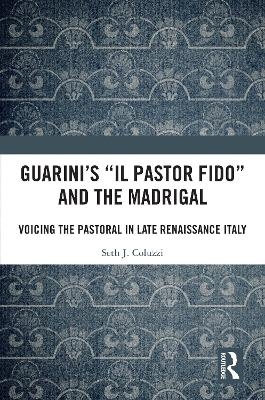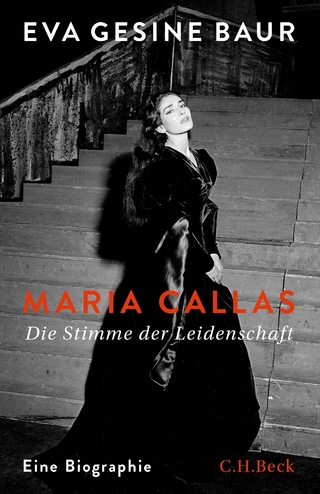
Guarini's 'Il pastor fido' and the Madrigal
Routledge (Verlag)
978-1-138-20709-7 (ISBN)
Battista Guarini’s pastoral tragicomedy Il pastor fido (1589) began its life as a play, but soon was transformed through numerous musical settings by prominent composers of the late sixteenth and early seventeenth centuries. Through the many lives of this work, this book explores what happens when a lover’s lament is transplanted from the theatrical stage to the courtly chamber, from speech to song, and from a single speaking character to an ensemble of singers, shedding new light on early modern literary and musical culture.
From the play’s beginnings in manuscripts, private readings, and aborted stage productions in the 1580s and 1590s, through the gradual decline of Pastor fido madrigals in the 1640s, this book examines how this widely read yet controversial text became the center of a lasting and prolific music tradition. Using a new integrative system of musical-textual analysis based on sixteenth-century theory, Seth Coluzzi demonstrates how composers responded not only to the sentiments, imagery, and form of the play’s speeches, but also to subtler details of Guarini’s verse. Viewing the musical history of Guarini’s work as an integral part of the play’s roles in the domains of theater, literature, and criticism, this book brings a new perspective to the late Italian madrigal, the play, and early modern patronage and readership across a diverse geographical and temporal frame.
Seth J. Coluzzi is an Assistant Professor of Music at Colgate University and a scholar of the music, poetry, and culture of late-Renaissance Italy. His work focuses on issues of analysis, mode, interpretation, and text-music relations in the Italian madrigal and has appeared in Journal of Musicology, Music and Letters, Music Theory Spectrum, Early Music, Studi musicali, and other journals and collections.
Introduction: Voice, Genre, and Perspective in the Italian Madrigal
Pastoral Personas in a Tragicomic Plot
1. Reading the Madrigal: Mode, Structure, and the Analysis of Late-Renaissance Music
On Mode
Modal Unity within Diversity: Commixtio Tonorum
Analytical Approaches to Late-Renaissance Polyphony
2. The Play and Its Early Audiences
Guarini’s Readings of the Early 1580s
Signs of Stagings in the Mid-1580s
Mantuan Efforts of the Early 1590s
The First (Confirmed) Productions
The Mantuan Productions of 1598 and the Madrigals of Gastoldi
Stagings in the Early Seventeenth Century
3. From Poetic Monster to Raccolta di madrigali: The Pastor fido Debate, 1586–1602
The First Wave of Debate: Denores and the two "Verrati," 1586–93
The Second Wave of Debate, 1600–01
4. Marenzio, Guarini, and the Origins of the Pastor fido Madrigal
Marenzio’s "O fido, o caro Aminta" (1595): An Introduction to Some Textual Conflicts
Marenzio and His Patrons in Rome
Guarini and the Lyric Madrigal
Marenzio’s Guarini Settings, 1580–99
Guarini’s Drafts and Salviati’s Lost Manuscript
Salviati’s Annotazioni and the Texts of Marenzio’s Madrigals
Scipione Gonzaga and Marenzio’s Pastor fido Settings
5. Beyond the Theater in Rome and Mantua: The Settings of Marenzio and Wert
Marenzio’s "O fido, o caro Aminta": The Integration of Text and Music
Marenzio’s and Wert’s Readings of "Cruda Amarilli" (1595)
Three Settings from Act 3
6. "Ahi, lasso!": Monteverdi, Il pastor fido, and a New, Mantuan Controversy
Monteverdi’s Early and Variant Readings, 1592–1603
The Monteverdi–Artusi Debate: Musical and Extramusical Provocations
7. Madrigalian Discourses in (and Beyond) Monteverdi’s Fifth Book
Modal Structure and the Temporal Worlds of Mirtillo and Amarilli
Interpersonal and Intertextual Dialogue in "Ecco, Silvio, colei che ’n odio hai tanto"
Inter-Madrigal Motives (and their Interpretative Consequences)
Monteverdi and the Madrigal as Discourse
8. The Settings of Pallavicino, Gastoldi, and Rossi, and the Afterglow of a Mantuan Pastoral Passion
Dilating Dissonances, Dynamic Structures, and Marenzian Ties in Pallavicino’s Sixth Book (1600)
Beyond Balli: Concision, Contrast, and Characterization in Gastoldi’s "Pastor fido" Settings
Salamone Rossi: Marenzian Cues on a New, Mantuan Stage
The Expectations of a "Pastor fido" Madrigal Reading and the Example of Artusi’s Failure
| Erscheinungsdatum | 14.07.2018 |
|---|---|
| Zusatzinfo | 18 Tables, black and white; 98 Line drawings, black and white; 98 Illustrations, black and white |
| Verlagsort | London |
| Sprache | englisch |
| Maße | 156 x 234 mm |
| Gewicht | 453 g |
| Themenwelt | Kunst / Musik / Theater ► Musik ► Klassik / Oper / Musical |
| Geisteswissenschaften ► Sprach- / Literaturwissenschaft ► Anglistik / Amerikanistik | |
| Geisteswissenschaften ► Sprach- / Literaturwissenschaft ► Literaturwissenschaft | |
| ISBN-10 | 1-138-20709-8 / 1138207098 |
| ISBN-13 | 978-1-138-20709-7 / 9781138207097 |
| Zustand | Neuware |
| Informationen gemäß Produktsicherheitsverordnung (GPSR) | |
| Haben Sie eine Frage zum Produkt? |
aus dem Bereich


